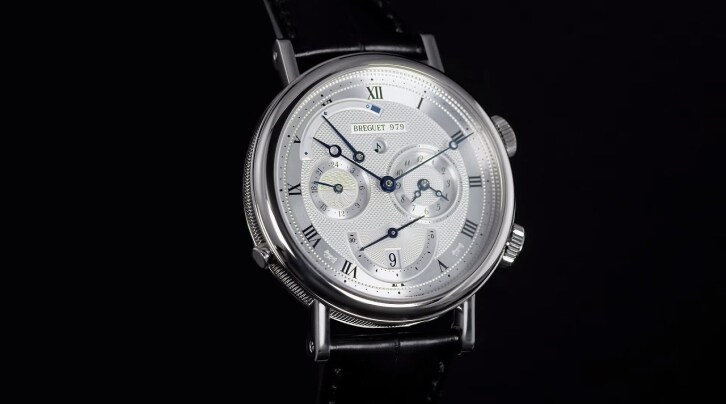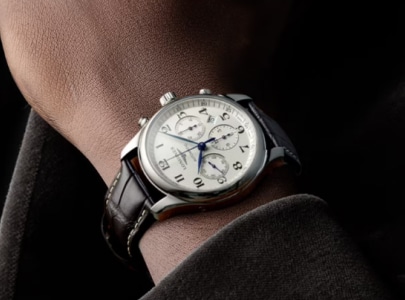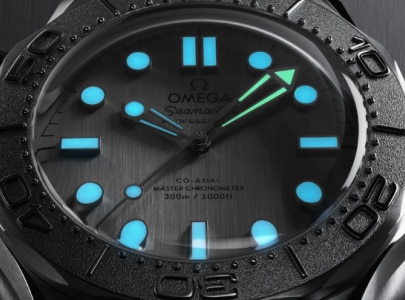When time becomes music… in the world of fine watchmaking, striking watches stand out as masterpieces of mechanical engineering. These timepieces do not just display time; they sing it. This guide delves into the fascinating world of striking watches, from their complex mechanisms to the rich history that underpins them.
History of striking watches: a temporal symphony
The history of the striking watch goes back to the 16th century, an era when hearing was as important as seeing. Designed to indicate time in the dark, these watches have evolved to become symbols of status and innovation.
The realm of haute horlogerie is dotted with innovations, but few embody the harmony between technique and art as striking watches do. These timepieces do not just show the hours; they announce them in a language that transcends the visual to touch upon hearing. It's a tradition that dates back to the creation of the first pocket watches with striking mechanisms in the early 17th century, where they allowed the wearer to know the time even in total darkness.
Over the centuries, this function has become a distinctive sign of horological mastery. For example, in 1676, the British Edward Barlow invented the spring-driven striking mechanism that allowed the hour to be chimed on demand, an innovation that paved the way for the minute repeater watches we know today. In the 18th century, watchmakers refined this technology to create watches capable of chiming quarters and minutes, offering increased precision.
With the advent of the industrial revolution and the development of watchmaking in the 19th century, striking watches became more democratized while remaining a luxury. More sophisticated movements were developed, especially with the arrival of wristwatches at the beginning of the 20th century. Striking watches were endowed with ever more refined complications, with the first minute repeater chronograph in 1925. More recently, innovations such as decentralized chiming or the flying minute repeater have been introduced, showing that the field of striking watches is still bubbling with activity.
How does a striking watch work?
A striking watch uses a set of gongs and hammers that strike at programmed intervals to emit sounds. The complexity lies in the precision required to harmonize these strikes with the indicated time. Each striking watch is an example of artisanal excellence, often requiring hundreds of hours of work to assemble the tiny components that make up its delicate mechanism. The minute repeater is considered the queen of striking watches, capable of chiming the hour, quarters, and minutes on demand. No pun intended, it’s one of the most complex complications for a watchmaker to achieve. Less complex but just as magical, the passing strike chimes the hours and sometimes the half-hours automatically without user intervention.
Masters of the chime and their iconic models
The Omega chrono chime
The Omega Chrono Chime stands out in the watchmaking universe as a mechanical symphony encapsulated in a watch case. Representing the pinnacle of Omega's engineering and innovation, this model is the result of years of research and development aimed at brilliantly merging watchmaking tradition and modern technology. The Chrono Chime exemplifies a remarkable technical feat capable of producing a harmonious melody to mark the passage of time. It is the most complex movement ever created by Omega, marking an unprecedented fusion of chronograph and chiming watch. Available in both Speedmaster and retro pocket watch versions, each crafted in 18K Sedna gold, this watch embodies a complication never seen before. The movement, beating at 5 Hz, allows a precision to the tenth of a second, inspired by Omega pocket watches from 1932. The Chrono Chime is distinguished by a button-activated chime emitting distinct sound phases for minutes, ten-second increments, and individual seconds with a precise 15-second gap between each phase. Crafted with extreme care, this watch is resistant to 15,000 gauss and offers a 60-hours power reserve, representing a true horological feat limited to a few pieces per year, merging Omega's history with unprecedented technical and aesthetic prowess. It is a piece that speaks as much to enthusiasts of fine watchmaking as to collectors in search of a timepiece with unique character, combining refined aesthetics with advanced functionality.
Breguet Marine alarme musicale
The Breguet Marine Alarme Musicale embodies the brand's maritime heritage while introducing a level of sonic sophistication rarely achieved in a wristwatch. This timepiece is an ode to the precision, elegance, and innovation that are characteristic of the Maison Breguet. Its musical alarm mechanism does not simply fulfill a practical function; it enchants the ear with a delicate melody, recalling the brand's origins and its deep connection with navigation and exploration. The Marine Alarme Musicale is more than a watch; it is an instrument that measures and announces time with unparalleled poetry. With its distinctive design and meticulous finishes, it appeals to both lovers of horological history and sea enthusiasts.
The art of Jaquet Droz in The bird repeater
The Jaquet Droz Bird Repeater is a masterful fusion of horological art and natural splendor, representing a remarkable advance in the field of Haute Horlogerie. Inspired by the landscape of Pierre Jaquet-Droz's native Jura, this timepiece is a true visual and auditory spectacle. Animated by a complex automaton mechanism, this watch delicately portrays blue tits interacting over their nest against the backdrop of the Saut du Doubs waterfall, making each scene astonishingly lifelike. At the heart of this artwork lies the minute repeater. Activated by a cathedral gong that encircles the movement, this function allows the watch to emit melodic sounds that indicate the hours, quarters, and minutes. The sound produced is of exceptional clarity and sweetness, reflecting the complexity and finesse of the striking mechanism integrated into a 47 mm diameter and 18.4 mm thick gold case. Comprising 508 distinct components, the Bird Repeater boasts a 48-hour power reserve. It stands out not only for its technical performance but also for its aesthetics, as each detail of the birds, the landscape, and even the water movement is finely crafted by hand. Available in two versions, one in gray gold set with diamonds and the other in red gold, each is produced in a limited edition of only 8 pieces, emphasizing the exclusivity and collectible value of this watch. This masterpiece is the result of two years of rigorous development, symbolizing Jaquet Droz's innovative spirit and passion for bringing to life the poetry of time. The Bird Repeater, beyond its technical prowess, is a celebration of the harmony between humanity, nature, and time, offering watch enthusiasts an unmatched immersive and emotional experience.
The minute repeater is the pinnacle of horological complications
Undoubtedly, the minute repeater is considered one of the most prestigious and complex horological complications, representing the pinnacle of art and mastery in watchmaking due to the development of a highly sophisticated mechanism that chimes the hours, quarter-hours, and minutes on demand. The complexity of this mechanism lies in its ability to translate the exact time into different sounds, requiring extreme precision in the design and assembly of its many components (usually more than 100 additional parts). The manufacture and adjustment of a watch equipped with a minute repeater demand exceptional artisanal know-how. Not all watchmakers are capable of it. The acoustic design of the watch, including the choice of materials and the configuration of the case, plays a major role in producing a pleasant and distinct sound. This requires special expertise to optimize the resonance and harmony of the sounds.
Owning a minute repeater watch is often perceived as a symbol of horological knowledge and high social status. It is a demonstration of appreciation for the art of craftsmanship, innovation, and the history of watchmaking, where it seems necessary to innovate in the field of minute repeaters, seeking to improve the precision, sonority, and complexity of the mechanisms. Each new creation is a testament to human ingenuity and the evolution of watchmaking, in such a way as to continue to weave the link with the history of watchmaking, of which the minute repeater perpetuates the legacy of the 18th-century pocket watches. It embodies continuity and respect for the horological tradition. For all these reasons, the minute repeater is considered one of the ultimate complications in watchmaking, a masterpiece of technicality, art, and history.
Eleonor Picciotto



